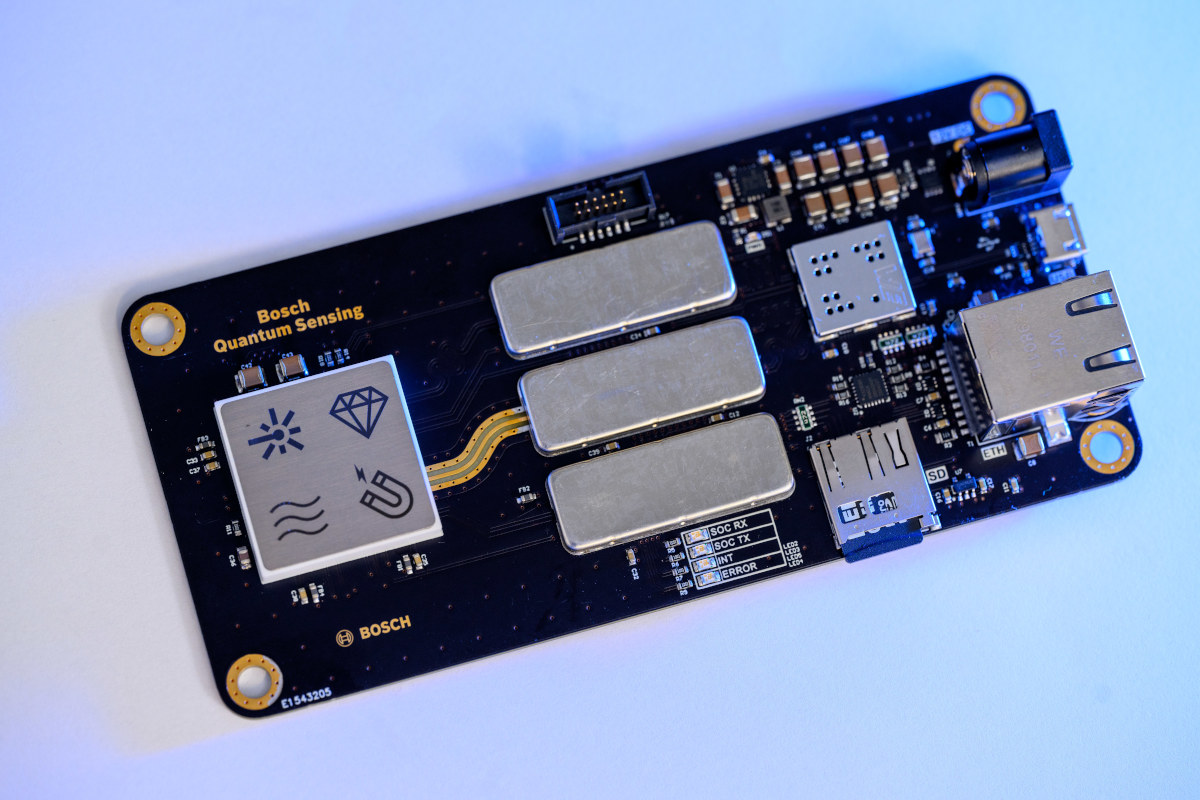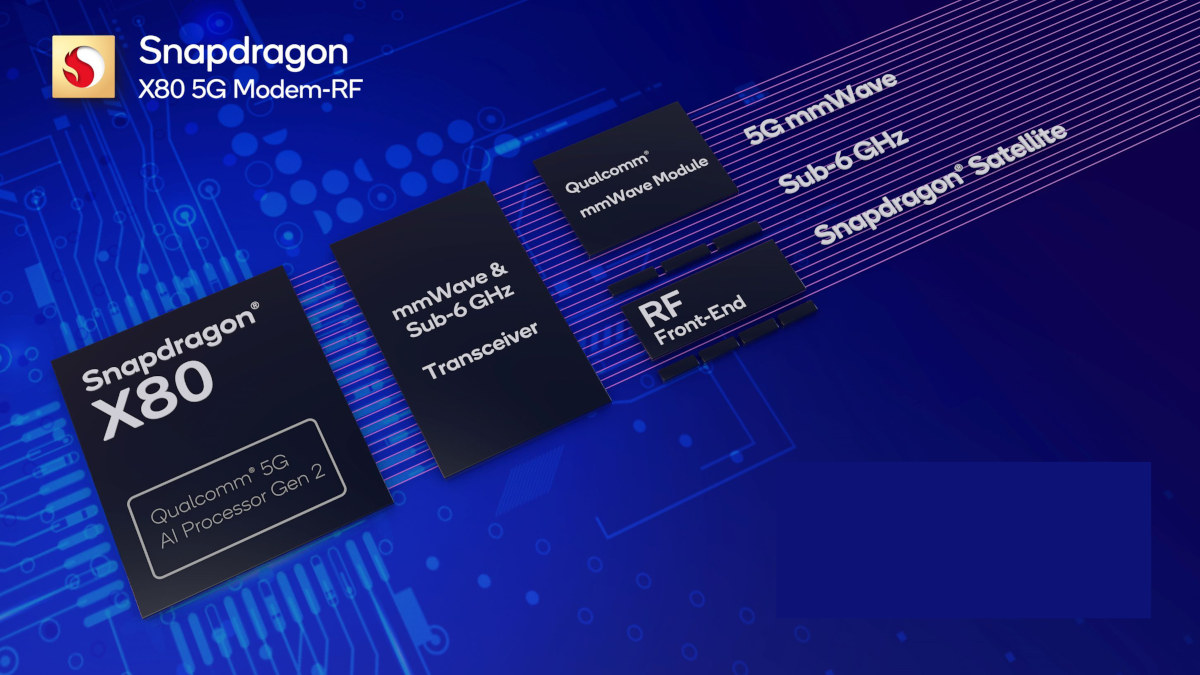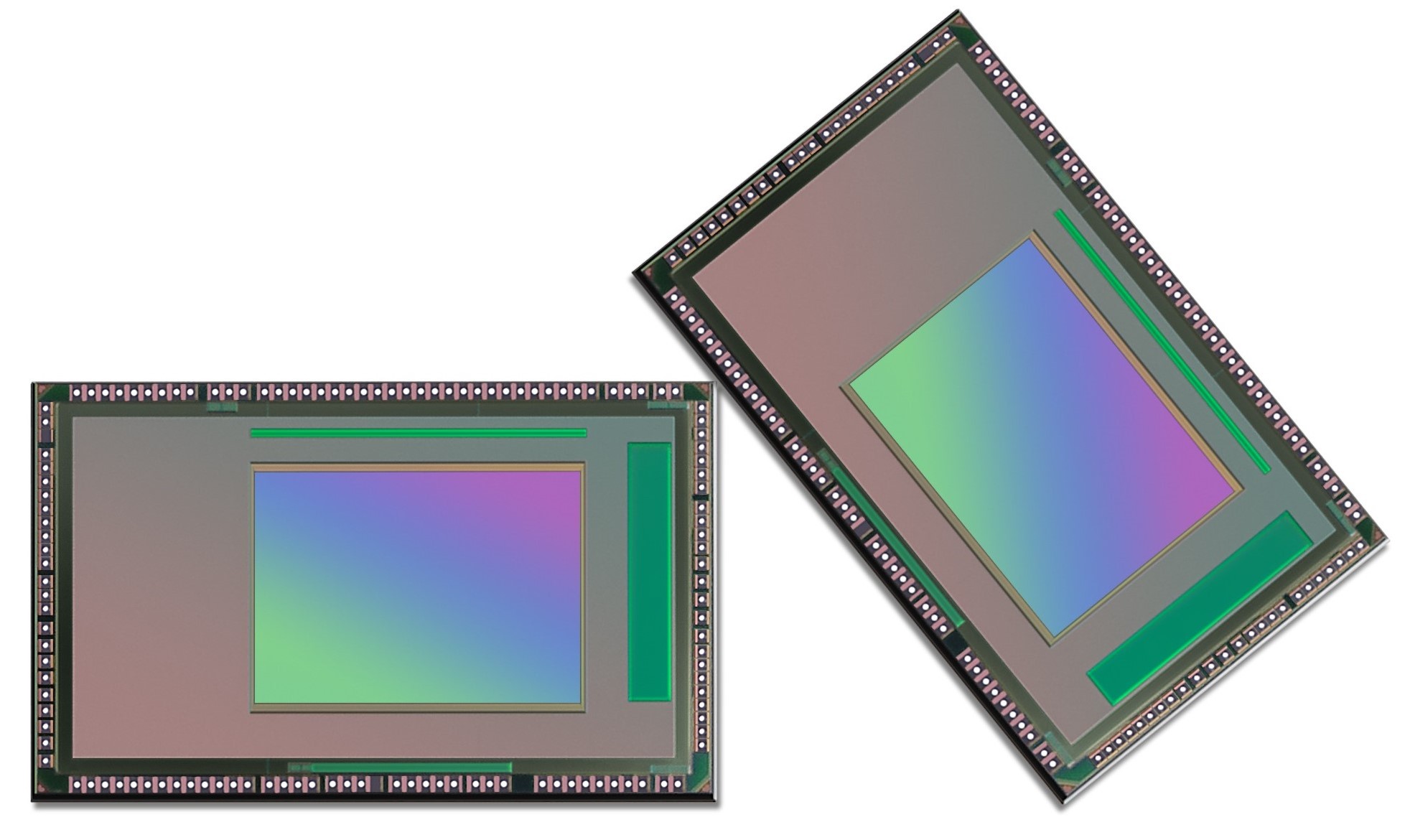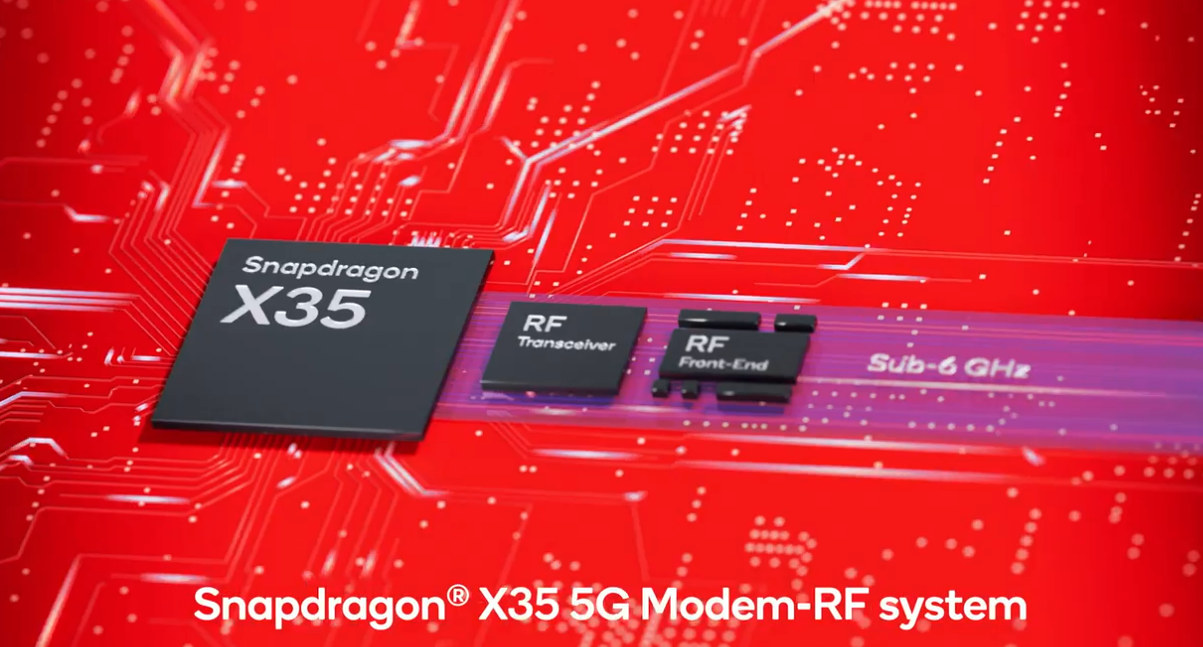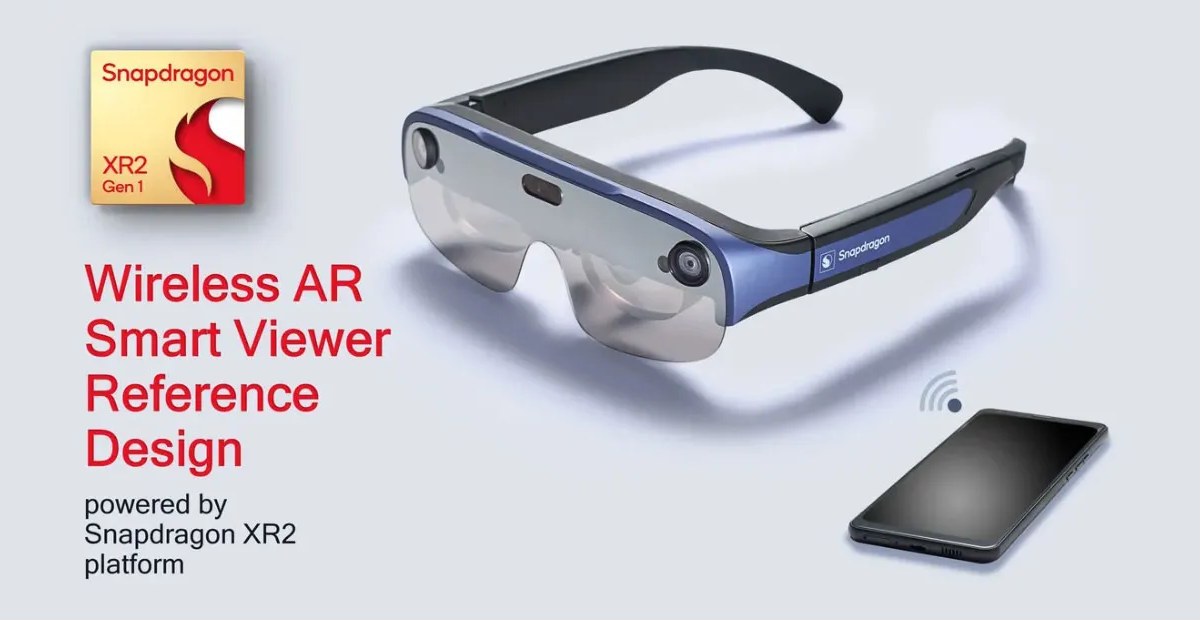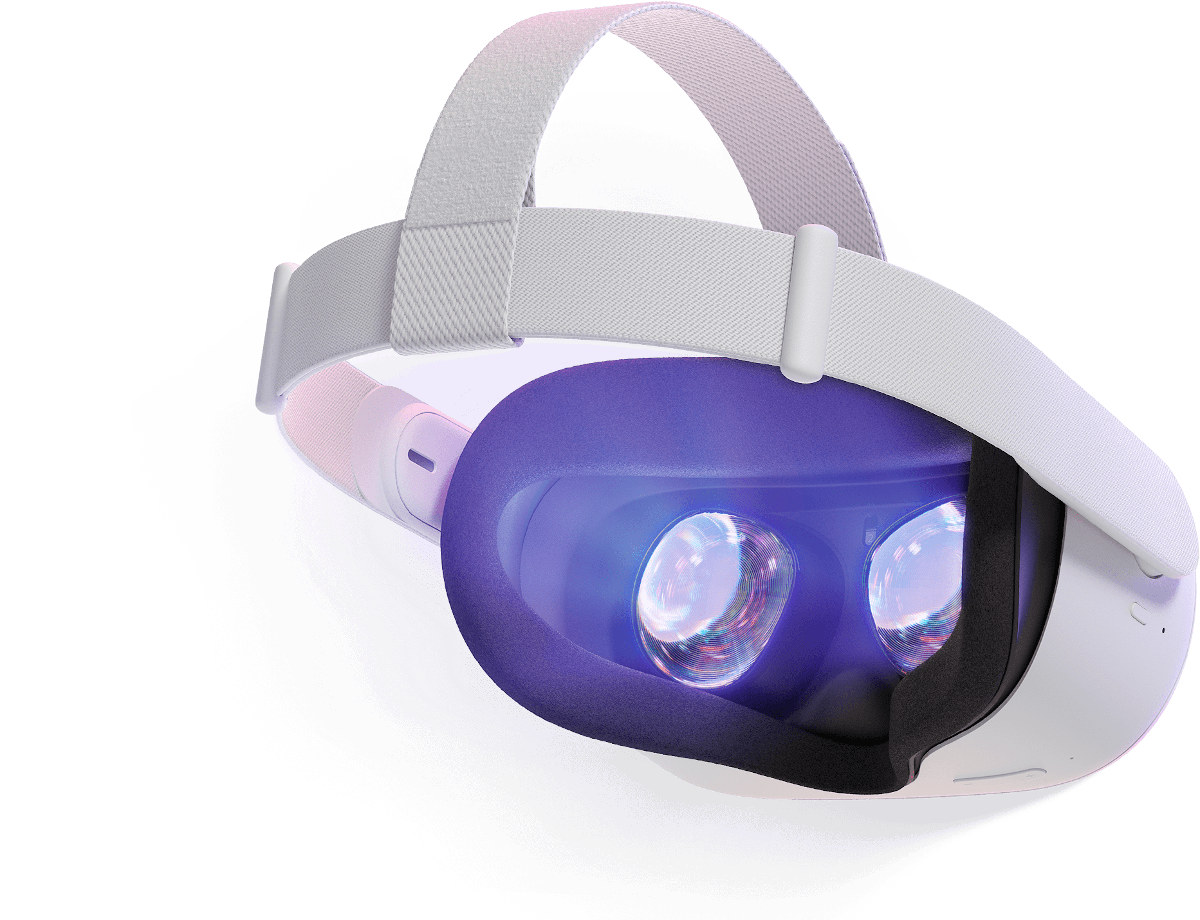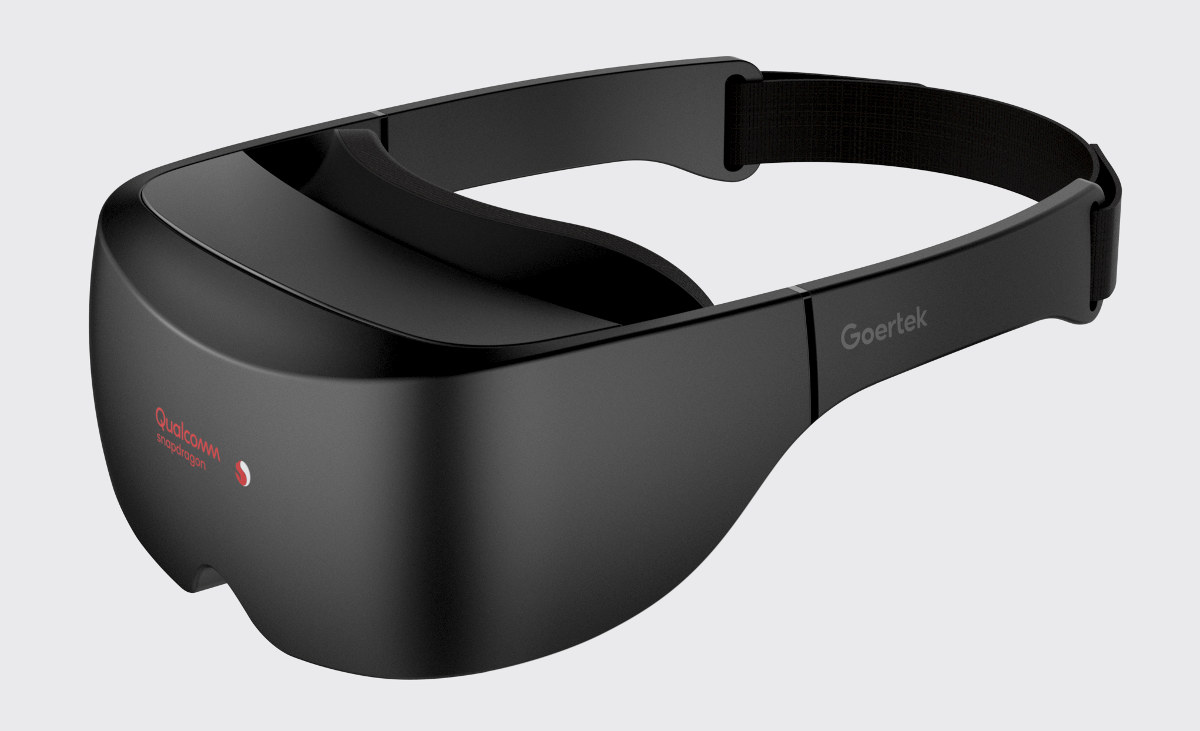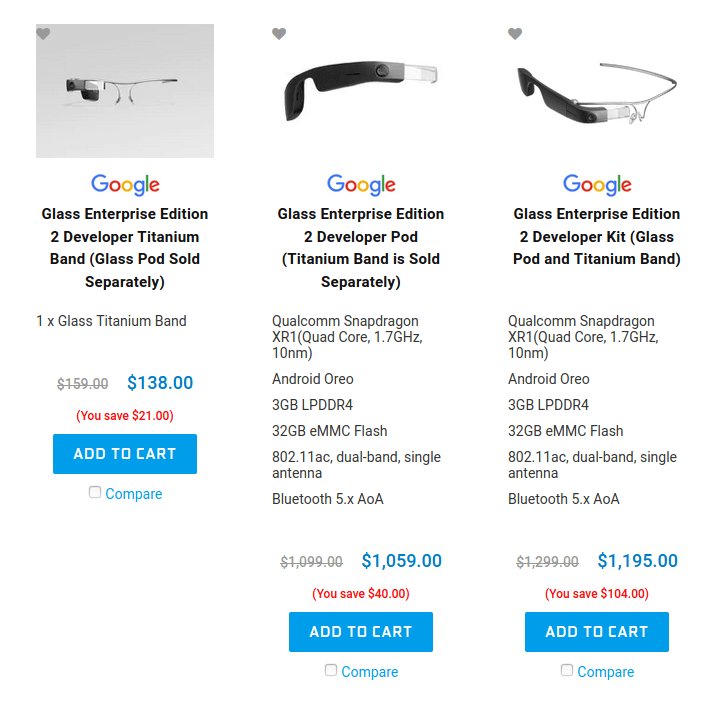Most people have heard about quantum computers, but quantum sensors? I’ve just come across those as Bosch is developing magnetic-field quantum sensors harnessing “the power of quantum physics to enable measurements with unmatched precision” while being much more compact than other quantum sensors using techniques like SQUIDs (superconducting quantum interference device), vapor cells, or optical traps. Bosch Quantum Sensing (that’s the full company name) further explains its magnetic-field quantum sensors surpass the capabilities of conventional sensors by offering a wider measurement range, higher sensitivity, and higher spatial resolution. They currently have an internal quantum sensor prototype/evaluation board that’s about the size of a smartphone, so they are still quite larger than traditional sensors. Bosch quantum magnetometer can measure tiny magnetic field variations with accuracy, including the Earth magnetic’s field, and even analyze the direction of and magnetude of magnetic fields giving the equivalent of a 3D-point magnetic representation. This notably […]
Qualcomm unveils Snapdragon X80 5G modem with NB-NTN satellite connectivity, AI Hub, and FastConnect 7900 WiFi 7 chip
Mobile World Congress 2024 (MWC 2024) has just started, and Qualcomm had three major announcements with the introduction of the Snapdragon X80 5G modem with NB-NTN satellite connectivity, the Qualcomm AI Hub with over 75 AI models optimized for Snapdragon processors, and the FastConnect 7900 WiFi 7, Bluetooth, and Ultra Wideband (UWB) chip. Snapdragon X80 5G modem-RF system Snapdragon X80 5G modem specifications: Peak download speed – 10 Gbps Peak upload speed – 3.5 Gbps Cellular Modem-RF Specs – 10CC aggregation in mmWave, 5CC aggregation in 5G sub-6GHz Cellular Technology 5G NR, sub-6 GHz Dynamic Spectrum Sharing (DSS) LTE, WCDMA, LAA, TD-SCDMA, GSM/EDGE, CBRS mmWave, sub-6 carrier aggregation (FDD-FDD) sub-6 carrier aggregation (TDD-TDD), 5G FDD, 5G TDD, sub-6 carrier aggregation (FDD-TDD) 5G SA (standalone), 5G NSA (non-standalone) F + F ULCA, FDD UL MIMO, Switched Uplink, 3GPP R18-ready (5G Advanced-ready), 6x CA sub-6 downlink carrier aggregation, 1024-QAM sub-6, FR1 + […]
Samsung announces ISOCELL Vizion 63D and Vizion 931 sensors for robotics and extended reality applications
Samsung Electronics, the world’s second-largest technology company by revenue, has introduced two new camera sensors in its ISOCELL Vizion lineup, the Vizion 63D and the Vizion 931. The Vizion 63D is the world’s first indirect time-of-flight (iToF) sensor with an integrated depth-sensing image signal processor (ISP) according to the company, and is tailored for capturing high-resolution 3D images. The Vizion 931 is a global shutter sensor that has been optimized to capture rapid motion without visible distortion. The 63D is an indirect time-of-flight sensor that measures the phase shift between emitted and reflected light and uses this measurement to construct a 3D map of its surroundings. It features an integrated image-signal processor that performs depth sensing and can reportedly process images at up to 60 frames per second in QVGA resolution (320×240). Vizion 63D captures images at a pixel size of 3.5 µm (the industry’s smallest in iToF sensors, according […]
Qualcomm Snapdragon X35 modem to bring 5G NR-Light to smartwatches, industrial IoT, XR glasses
Only a few years ago, 5G was only found in premium smartphones, but with the launch of the Snapdragon X35, Qualcomm aims to bring 5G cellular connectivity to wearables, industrial IoT applications, and eXtended Reality (XR) glasses. The Snapdragon X35 specifically supports 5G NR-Light, aka RedCap, which is described as ” a new class of 5G” that “fills the gap in between high-speed mobile broadband devices and extremely low-bandwidth NB-IoT devices” and delivers link rates of up to 220 Mbps. Snapdragon X35 modem key features and specifications: Cellular Technology: 5G NR-Light, FDD, SA (standalone), TDD, sub-6 GHz, HD-FDD, LTE Multi-Mode NR – Sub-6 SA, LTE Cat 4 3GPP Release 17 “RedCap” modem Number of Antennas: 1 Tx antenna, 2 Rx antennas Cellular Modem-RF Specs: 20 MHz bandwidth (sub-6 GHz), 1RX/2RX, 1TX, and Half-Duplex FDD (HD-FDD) Calling Services: VoLTE, VoNR Peak Upload QAM – 64 QAM Peak Upload Speed: 100 Mbps […]
Lightweight wireless AR Smart Viewer reference design is powered by Snapdragon XR2 platform
Qualcomm unveiled a new Wireless AR Smart Viewer Reference Design powered by the Snapdragon XR2 platform last week with very few details, but the company has now demonstrated the system to some members of the press, so let’s have a closer look. The reference design aims to provide a similar level of performance as a headset connected to PC or premium smartphone, but with some of the processing offloaded to the Snapdragon XR2 processor, thereby eliminating the need for a cord while still achieving lag-free experiences in combination with the Qualcomm FastConnect 6900 WiFi 6 and Bluetooth 5.3 solution. It is supposed to offer a 40% thinner profile and a more balanced weight distribution than the earlier Snapdragon XR1 smart glasses reference design. Wireless AR Smart Viewer reference design specifications: SoC – Qualcomm Snapdragon XR2 with Octa-core processor with 1x Kryo Gold prime @ 2.84 GHz + 3x Kryo […]
Facebook Introduces Oculus Quest 2 Standalone VR headset Powered by Snapdragon XR2 SoC
Virtual reality headsets used to have to be connected to computers for optimal performance while gaming, and several years ago, most standalone VR headsets were only good to play some videos. But technology has evolved, and with the launch of Snapdragon XR2 powered Oculus Quest 2 standalone VR headset available for pre-order for $299, Facebook has decided to completely leave the PC-only VR headset business. Oculus Quest 2 specifications: SoC – Qualcomm Snapdragon XR2 platform with AI acceleration capability similar to Snapdragon 865 System Memory – 6GB RAM Storage – 64GB or 256GB flash Display Dual 1832 x 1920 pixel (per eye) display @ 90 Hz IPD Adjustment – 58mm, 63mm or 68mm Audio Integrated speakers and microphone, 3.5 mm audio jack Connectivity – WiFi, Bluetooth (but no audio support due to latency) Tracking Technology – Oculus Insight inside-out 6-DoF tracking with motion controllers USB – USB-C cable for charging […]
Qualcomm Snapdragon XR2 5G VR Reference Design Comes with Dual 2Kx2K Display, Up to 7 Cameras
Qualcomm Snapdragon XR1 was the first processor from the company dedicated to extended reality (XR) and virtual reality (VR) applications. It found its way in various hardware development kits, a well as Google Glass Enterprise Edition v2. We missed the company’s announcement of the Snapdragon XR2 platform with 5G support last December, but Qualcomm has now just unveiled the Snapdragon XR2 5G Reference Design to help OEMs shorten time to market. Qualcomm Snapdragon XR2 Platform Qualcomm did not provide detailed specifications, but the company claims Snapdragon XR2 delivers 2x the CPU and GPU performance, 4x more video bandwidth, 6x higher resolution and 11x AI improvement compared to Snapdragon 835 Mobile XR Platform. It’s also the first XR/VR platform to support seven concurrent cameras, optional 5G connectivity, and enables “true” MR (Mixed Reality) thanks to low latency camera pass-through. Some of the highlights of the processor include: Up to 3K by […]
Google Glass Enterprise Edition 2 is Now Sold to Developers for $1,060 and Up
Powered by Snapdragon XR1 processor, Google Glass Enterprise Edition v2 has launched in May 2019, but at the time you had to contact Google Glass sales team or distributors to source one or more samples for your application, and there was no easy way to purchase the glasses online. But things have changed as the company realized they should make it easier for developers to build apps for the platform, and Google Glass Enterprise Edition 2 can now be purchased for around $1,060 from resellers such as Mobile Advance or SHI. At that price, it does not come with the “Titanium band” that appears required to make sure the glasses stay in place. So the price goes up to $1,195 (or $136 extra) if you want the Glass Enterprise Edition 2 Developer Kit with both the glass pod and the titanium band. This is not meant as a consumer device […]


